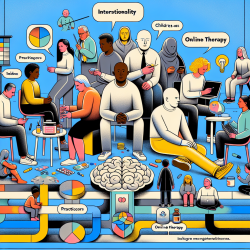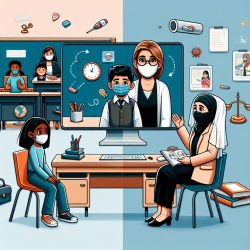Understanding Intersectionality in Mental Health and Substance Use
The research article "Mental health and substance use among women and men at the intersections of identities and experiences of discrimination: insights from the intersectionality framework" offers profound insights into how intersecting identities and discrimination experiences impact mental health and substance use. This understanding is crucial for practitioners, especially those providing online therapy services to schools, such as TinyEYE, as it helps tailor interventions that consider the complex interplay of identity and discrimination.
Key Findings from the Research
The study highlights several important points:
- Intersecting identities and discrimination experiences have different impacts on mental health and substance use.
- Women experiencing both racial and sexual orientation discrimination reported higher depressive symptoms and substance use.
- White sexual minority women faced higher risks for all outcomes compared to their heterosexual counterparts.
- Among men, White sexual minority men showed higher depressive symptoms and marijuana use.
Implications for Practitioners
For practitioners, these findings emphasize the need to consider both identities and discrimination experiences in therapeutic settings. Here are some practical steps:
- Assessment: Incorporate questions about discrimination experiences and intersecting identities in assessments to better understand clients' backgrounds.
- Tailored Interventions: Develop interventions that address specific discrimination experiences and identity-related stressors.
- Education and Awareness: Educate clients about the impact of discrimination on mental health and substance use to empower them with knowledge.
- Advocacy: Advocate for policies that address structural discrimination and promote mental health equity.
Encouraging Further Research
While this study provides valuable insights, it also highlights the need for further research. Practitioners are encouraged to engage in or support research that explores:
- The impact of intersectionality on different age groups, particularly children and adolescents.
- Longitudinal studies to understand how discrimination experiences affect mental health over time.
- Interventions that effectively mitigate the negative impacts of discrimination on mental health and substance use.
Conclusion
By integrating the intersectionality framework into practice, practitioners can enhance their understanding of clients' experiences and improve therapeutic outcomes. This approach not only benefits individual clients but also contributes to broader efforts to achieve mental health equity.
To read the original research paper, please follow this link: Mental health and substance use among women and men at the intersections of identities and experiences of discrimination: insights from the intersectionality framework.










